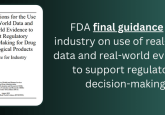Review of Australian HTA policy and methods prioritizes real-world evidence as a key reform

Enhancing timely access to relevant, quality real-world data and real-world evidence amongst the fifty recommendations made in the report examining Australian HTA policy and methods.
The publication of the long-awaited report reviewing Australia’s approach to health technology assessments (HTAs) signals a significant moment for the country’s healthcare system. The review outlines a series of recommendations aimed at improving access to medical technologies, enhancing equity for diverse patient groups, and increasing the use of real-world data (RWD). These proposals seek to streamline current processes and make HTA more efficient and transparent, benefiting both healthcare providers and patients across Australia.
The review was developed for the Australian Government as a commitment under the 2022–27 Strategic Agreement between the Commonwealth and Medicines Australia. The final report of the HTA Policy and Methods Review titled, “Accelerating Access to the Best Medicines for Australians Now and Into the Future,” has been published following extensive consultations with consumers, clinicians, and industry stakeholders. It presents fifty strategic reforms (recommendations) aimed at enhancing Australia’s HTA framework that provide stakeholders and decision-makers with tools and processes to carry out these reforms. The recommendations focus on a series of key objectives including addressing disparities in healthcare access, expediting the availability of critical medicines, fostering meaningful engagement with stakeholders, and bolstering HTA capabilities to ensure future readiness.
Real-world evidence (RWE) is flagged as key to ensuring HTA capability is adaptable and future-proof. The report identifies the need for a standardized approach to collecting RWD and RWE to enhance decision-making and highlights the need for a coordinated framework to enhance timely access to quality data, support epidemiological modeling, and assess the effectiveness and safety of health technologies.
Key recommendations aimed at increasing ‘confidence, awareness and acceptance of cross jurisdictional and cross-sectoral RWD access and use in HTA’ include:
- Governance and strategic oversight of RWD to support HTA decision-making: Develop an Australian framework for RWD collection, reporting to the government, co-developed by a multi-stakeholder advisory group.
- Data infrastructure: Create a flexible, scalable national data infrastructure to support HTA needs, harmonized with international data standards, with mapping of existing Australian RWD collections as an identified as an immediate priority.
- Inter-governmental data collaboration: Facilitate cross-jurisdictional data sharing among state and federal entities.
- Methods development: Establish best practices, overseen by the multi-stakeholder advisory group, for data standardization, standardized analytics and reporting.
- Resolving uncertainty: Early identification and configuration of RWD collections to resolve uncertainties in cases likely to result in a managed entry agreement.
A recent report by the Office of Health Economics examining how HTA agencies are evolving their methods has shown an increasing, yet inconsistent, consideration of RWE, with many still ‘lacking clarity’ regarding how RWE can be used. Three HTA bodies – the Danish Medicines Council, NICE – National Institute for Health and Care Excellence, and Canada’s Drug Agency – have introduced explicit guidance on integrating RWE into their assessments over the past few years. Given this trend, one can be hopeful that Australia’s HTA reforms, with their focus on RWE, will align with these evolving international practices.
Want regular updates on the latest real-world evidence news straight to your inbox? Become a member on The Evidence Base® today>>>






